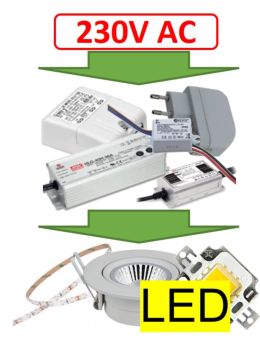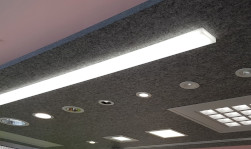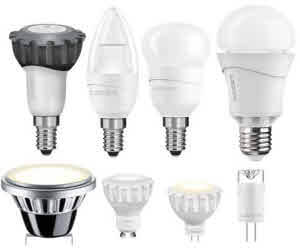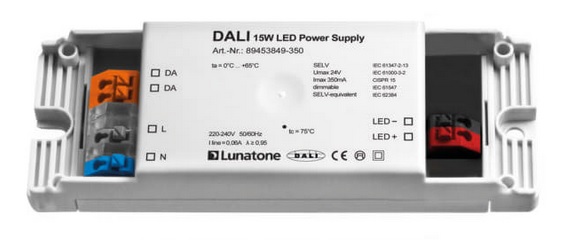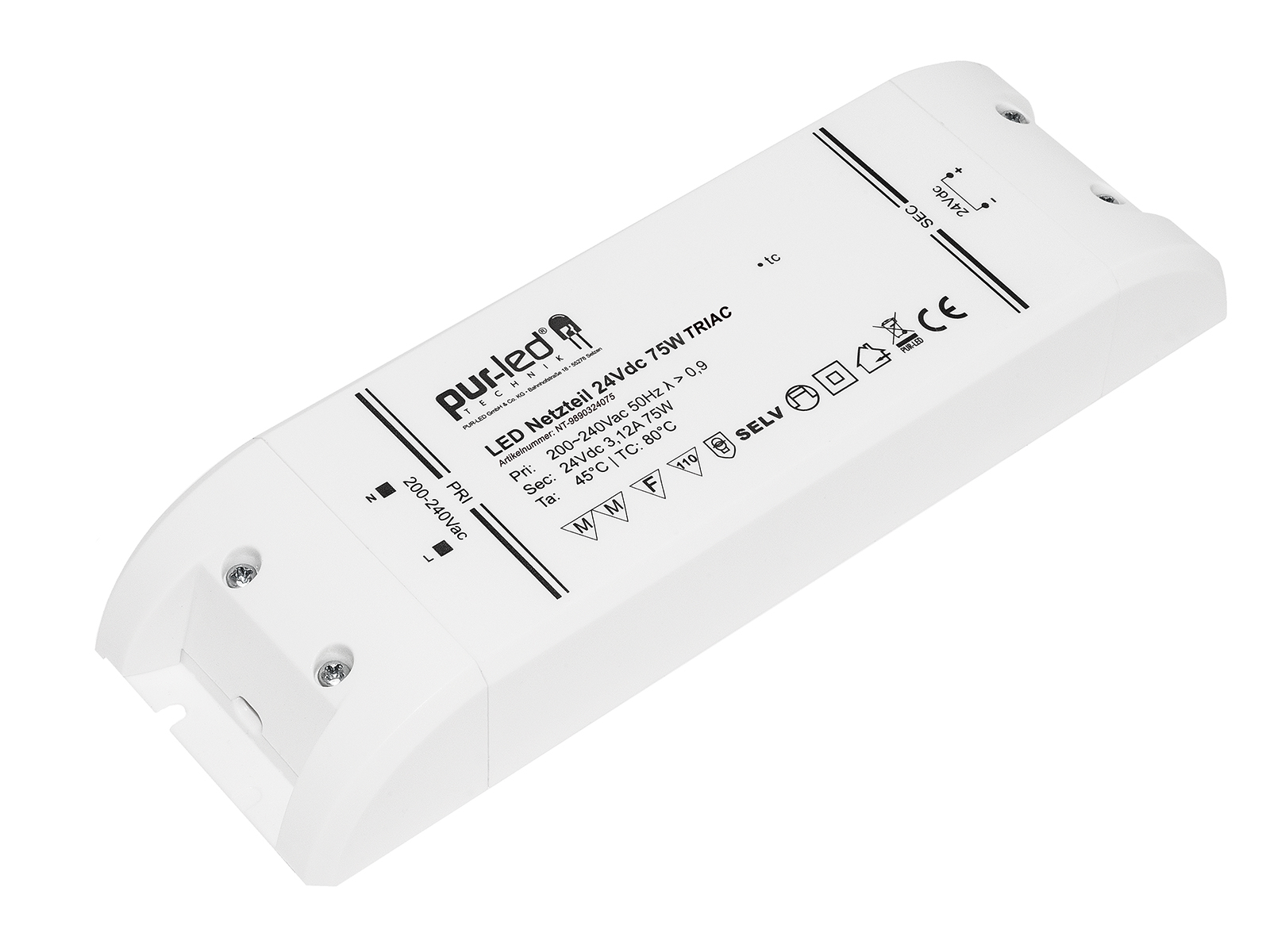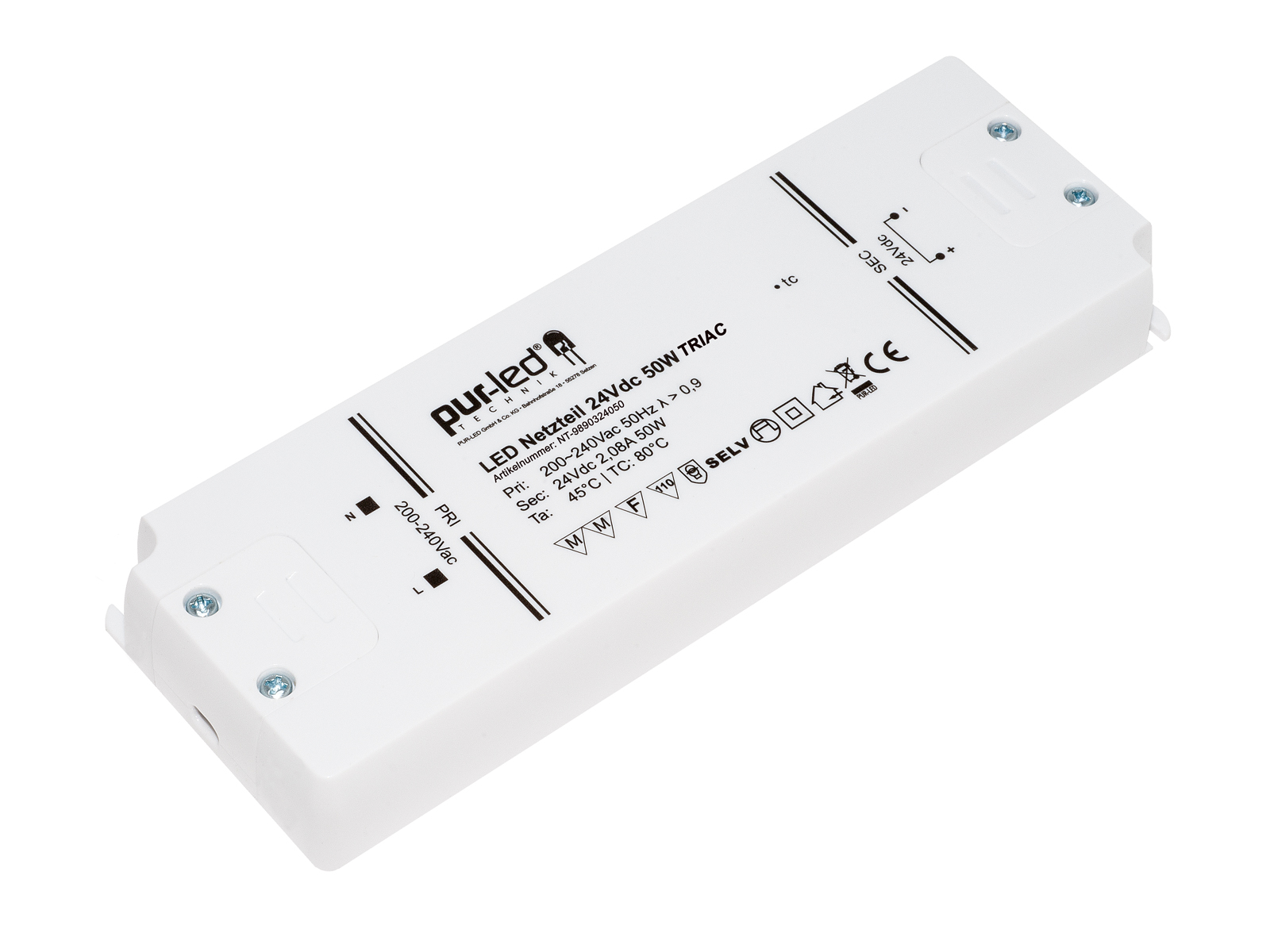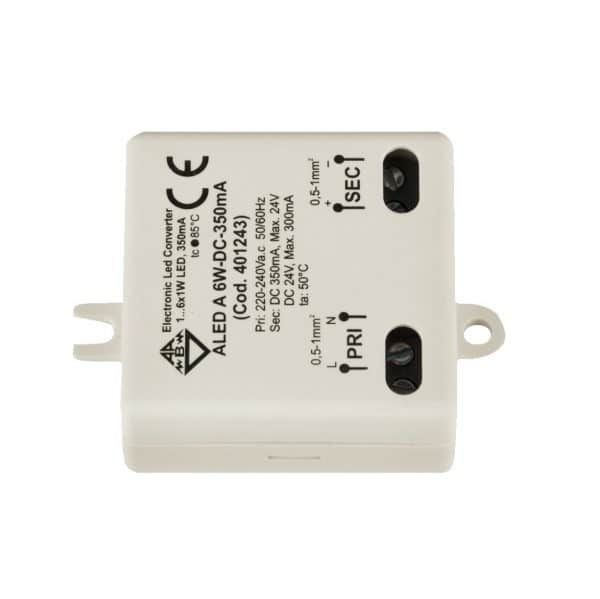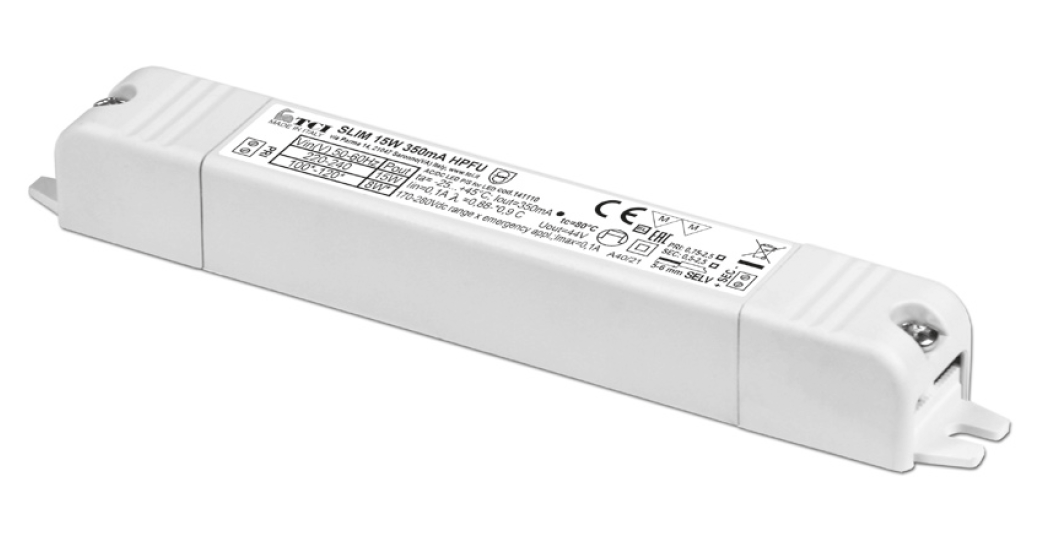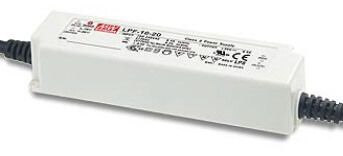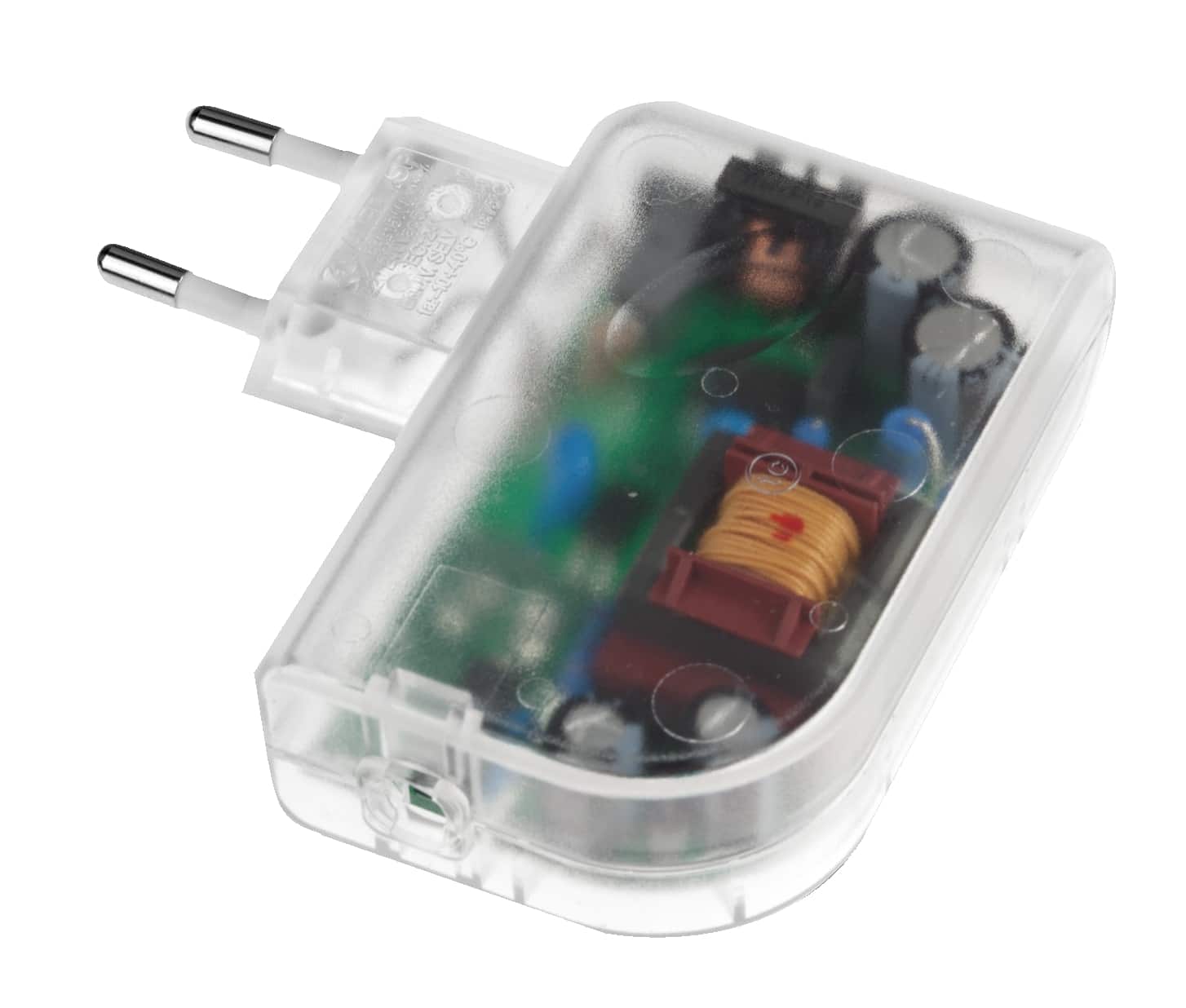LED Trafo - definition and application examples
Transformer stands as short form for transformer with the task to transform (convert) alternating voltage. Thus, for example, from a 230V AC voltage at the input, an output voltage of 12V or 24V, or any application-dependent voltage is generated.
Today, devices called LED transformers are usually special electronic ballasts with a low minimum load and small ripple.
What is AC or DC?
No, this has nothing to do with a music band :-), but describes the form of the output voltage and is important to know for the particular application. The respective signal form is generated by the corresponding electronics in the LED transformer.
AC stands for "Alternating Current". The output provides an alternating voltage and is suitable e.g. for 12V AC retrofit lamps such as LED spotlight 12V with GU5.3.
Recommended product is e.g. the TCI MW70.
Dimming is possible here exclusively via phase dimming. Phase cut-off dimmers are preferred. Please make absolutely sure that the connected LED lamps are also dimmable.
If the dimmability is to be maintained, all three components must match. The LED lamp must be dimmable, the power supply 12V transformer must also be suitable for dimming, and also be compatible with the phase on, or section dimmer. Since there is no standardized interface here, a look at the compatibility lists is worthwhile to avoid flickering, for example. In general, however, this solution requires a compromise in terms of dimming comfort.
DC, on the other hand, stands for "Direct Current". The output voltage is polarized, like a battery with positive and negative pole.
Applications are usually LED strips or LED modules with integrated constant current sources.
LED strips in particular are preferably operated with 24V as an alternative to 12V. The reason is the halving of the current at the same power. Thus, the voltage losses in the supply line and on the LED strip are lower.
Transformer stands as short form for transformer with the task to transform (convert) alternating voltage. Thus, for example, from a 230V AC voltage at the input, an output voltage of 12V or 24V, or any application-dependent voltage is generated.
Today, devices called LED transformers are usually special electronic ballasts with a low minimum load and small ripple.
What is AC or DC?
No, this has nothing to do with a music band :-), but describes the form of the output voltage and is important to know for the particular application. The respective signal form is generated by the corresponding electronics in the LED transformer.
AC stands for "Alternating Current". The output provides an alternating voltage and is suitable e.g. for 12V AC retrofit lamps such as LED spotlight 12V with GU5.3.
Recommended product is e.g. the TCI MW70.
Dimming is possible here exclusively via phase dimming. Phase cut-off dimmers are preferred. Please make absolutely sure that the connected LED lamps are also dimmable.
If the dimmability is to be maintained, all three components must match. The LED lamp must be dimmable, the power supply 12V transformer must also be suitable for dimming, and also be compatible with the phase on, or section dimmer. Since there is no standardized interface here, a look at the compatibility lists is worthwhile to avoid flickering, for example. In general, however, this solution requires a compromise in terms of dimming comfort.
DC, on the other hand, stands for "Direct Current". The output voltage is polarized, like a battery with positive and negative pole.
Applications are usually LED strips or LED modules with integrated constant current sources.
LED strips in particular are preferably operated with 24V as an alternative to 12V. The reason is the halving of the current at the same power. Thus, the voltage losses in the supply line and on the LED strip are lower.
When selecting the right LED transformer for e.g. LED strips, the following criteria should be considered:
- Power range:
For e.g. 22m LED ribbon with 10W/m each, a 240W power supply is perfect, such as the HLG-240H-24 alternatively the newer Meanwell PWM series. - Dimmability:
- 1-10V/potentiometer

This e.g. is equipped with an additional control input in version B. The power supply can be dimmed via an external potentiometer or a control voltage (1-10V).led transformers, led transformer e.g. HLG-240.
We recommend to check the used power range and the dimming characteristic in advance. - DALI Control
The perfect way to dim. Modern LED transformers have a DALI control input similar to the 1-10V input.
e.g. from the Meanwell ELG series or Meanwell PWM series. - Phase dimming is also available for electronic DC transformers. Due to EMC restrictions, we only offer LED transformers up to 80W.
For outdoor use, there is a choice of LED transformer IP65 / IP67.
- 1-10V/potentiometer
Depending on the version, there is IP 65 up to IP 67 protection against ingress of water and dust. This makes them ideal for use in street lights or other outdoor luminaires. According to our experience, our customers like to use them as control gear for LED strips. Examples of applications are winter garden, facade lighting, railing, and bridge lighting, etc.
Power supply buying guide - Find the right and best power supply for your LED system
In the following table we explain what is important and what the main differences are. Basically all LED DC power supplies must comply with DIN61347. Only then they are allowed to be used with LEDs. A feature we pay attention to.
| Power supply types | LED transformer Constant voltage power supply*) | LED driver Constant current power supply |
| Main feature: Voltage (Volt) | impressed/fixed, constant. Example values: 12Volt, 24V, 48V | depending on the connected LED module, LED spot, LED string. Specifications correspond to a "working range", determined by the number of LEDs. (independent of the current). Example values: 350mA/700mA .... 1050mA |
| Main feature: Current (amps, milliamps) | depending on the number and power of the connected e.g. LED strips. (can be set to a max. value with some power supplies). | set current is fixed. Drives (!) a defined current through the LED string. |
| Power (Watt) | 16W to 600W | 1,4W to 100W |
| Areas of application: | Low voltage LED modules, LED boards with integrated electronics for the LEDs. Main application: LED strips, LED strips, as well as their control electronics. | Pure COB LED chips, LED ceiling recessed spotlights, LED boards in luminaires for direct constant current operation. It is mandatory to pay attention to the current specification. |
| Flicker/Dimming | Output brightness control via PWM (pulse width control). Flicker depending on modulation method and frequency. | Mostly PWM control, is increasingly replaced by versch. innovative solutions such as hybrid dimming or completely flicker-free linear control (AM, - amplitude modulation). (Look for the "AM" symbol). |
| Light control | For both types brightness control via common technologies such as phase dimming, DALI, 0/1-10V, touch dimming, or control via radio (Casambi, Bluetooth, Enocean, Zigbee) is possible. (Use our filter function to quickly narrow down) | |
| Housing | Available housing forms are sheet metal, aluminum and plastic housings, fully encapsulated with high IP protection, as a device with strain relief (for e.g. operation as an external power supply in false ceilings) or as a recessed version for integration into an LED luminaire system. Versions in plug form, top-hat rail or box installation are also available. | |
| Cooling | All our devices in the store are quiet power supplies and work with passive cooling. During operation, we recommend compliance with the test point Tc specified maximum temperature. This ensures a long service life. | |
| Power supply manufacturer in store (only renowned Brands) | Meanwell, Pur-LED, Arditi, Lunatone, TCI, Eldoled, Enertex, Code Mercenaries, Tridonic | |
| alternative names | LED power supply, LED transformer, DC power supply, mains transformer, transformer power supply, fixed voltage power supply, electronic transformer, constant voltage source | Constant current source, constant current Driver, |
*) Attention: These are direct current (DC) power supplies and differ in application from alternating current transformers as with specifications of 12V AC.
It is imperative to pay attention to the exact specification on the lamp.
For closer containment, we have set up filter functions on our pages for closer containment and is highly recommended by us. You are also welcome to send us a mail for further help.

